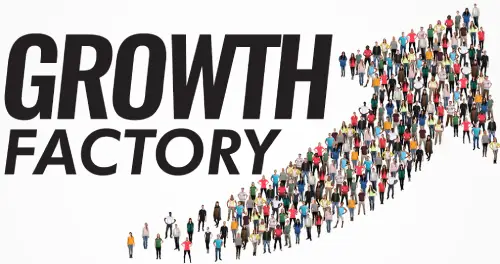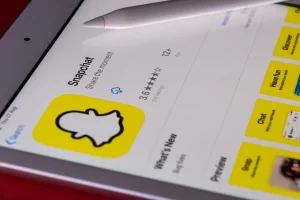The Ultimate Guide to Creating a Well-Referenced Blog in 2025
Blogs are a great way to exchange ideas and earn income for both businesses and individuals. What is a blog exactly? A blog allows users to post regular content online. It is a way to share ideas, opinions, tutorials and thoughts on a variety of topics. Blogs can be dynamic information sources that include images, videos, and text.
If you are considering starting a blog, it is important to understand the steps involved. This comprehensive guide will walk you through all the steps necessary to start a successful blog. From brainstorming to content creation, to monetization.
Table of Contents
ToggleWhat is a blog?
Blogs are digital journals that allow writers to share their ideas and connect with their audience. Blogs cover a variety of topics, ranging from personal experiences to professional insights or niche subjects. Bloggers can create communities around shared interests,and encourage discussion among their readers. WordPress is the most widely used blogging platform. It comes in two versions, a seself-hostedption and a hosted version. This guide will focus on the self-hosted version as it gives you more control over your content.
You should set goals for your blog.
It’s crucial to set clear and attainable goals before diving into the technical aspects of creating a new blog. What are your goals for your blog? Common goals include:
Monetization
Consider monetization options if you want to make money from your blog. You can either use affiliate marketing or ads to monetize your blog. Each option comes with its own set of requirements and challenges.
Information
If making money is not your primary goal, then you may want to consider creating a blog with valuable information. If you use high-quality SEO techniques and focus on creating informative blogs, they are more likely to rank highly in search engine results.

Building Community
Bloggers often aim to create a community where people who share similar interests can come together and discuss topics. If this is something that resonates with your interests, consider ways to promote engagement and dialogue between you and your readers.
Personal Growth
Blogs can be used to reflect on your journey, share experiences, and document growth. This allows for self-expression and creativity.
Choosing the Right Niche
Decide on a topic for your blog. You can choose a lifestyle blog covering a variety of topics, or a blog niche that specialises in a particular area. Niche blogs tend to attract a targeted audience. This makes it easier to establish an expertise and build a community. When choosing a niche, consider these factors:
Passion & Expertise
Choose a niche aligned with your expertise and interests. Your passion for blogging will not only sustain you, but also resonate well with your readers.
Market Demand
You should research your niche to make sure there are people who will be interested in your content. Google Trends is a great tool to identify the most popular topics.
Longevity
Think about whether your niche is relevant for the long term. Some topics are trendy today but may lose their appeal in the future.
Selecting a Domain Name
It is where readers will find your blog. Your domain name should be easy to remember, easy to spell and reflect the focus of your blog. If your desired name isn’t available, consider alternatives like .net or .org. Here are a few tips to help you choose a domain:
Simplicity
Keep it simple. Avoid confusing spellings or hyphens.
Relevance
Make sure your domain is related to the content of your blog. A name that is informative will help visitors understand what they can expect.
Check Availability
Check the availability of domains at Namecheap and GoDaddy.
How to choose a hosting platform
The next step after registering your domain is to select a hosting provider. A reliable host ensures your blog runs smoothly. Hosting free services often comes with limitations, which can limit your blog’s potential growth. Opt for managed hosts with better performance, features and customer service. When choosing a host, consider these factors:
Speed up
A fast hosting service improves user experience. Everything from user retention to search engine rankings is affected by website speed.
Support
Select a web host that offers excellent customer service. When technical problems arise, prompt support can save time and frustration.
Scalability
You may upgrade your hosting package as your blog grows. Choose a hosting provider that is able to scale easily in order to accommodate an increase in traffic and content.
Design Your Blog
It’s now time to create your blog. Start your blog by following these simple steps:
How to Choose a Blogging Platform
WordPress.org is known for its ease of use and flexibility. It is free and offers many customization options. The majority of reputable hosts offer easy installation for both beginners and experienced bloggers.
Selecting a theme
Choose a theme for your blog after installing WordPress. A theme that is well designed can enhance the user experience, and be customized to fit your brand. Choose themes that are responsive to make sure your blog will look great on any device. Popular themes like Divi and Astra have extensive customization options.
Installing Essential Plugins
Plugins are a great way to enhance the functionality of your blog. Essential plugins include:
- SEO plugins: Optimize your content for search engines. Popular choices include Rank Math and Yoast SEO.
- Analytics plugins: Track your performance and gain insight into your audience. Google Analytics can be used to understand user behavior.
- Social Media Sharing Plugin: Encourage social media sharing by allowing your readers to easily share your content.
- Security Plug-Ins: Secure your blog against potential threats. Wordfence, Sucuri and other plugins can enhance your blog’s security.
Create a Content Structure
It’s time to organize your blog content.
Create Categories
Create categories to make your blog easier for readers to navigate. Sort your content by categories that correspond to the main topics you will cover. This improves the user experience and also helps SEO.
Create Pages
Create static pages to provide essential information about your blog. Pages that are commonly used include:
- About page: Tell your story and describe the purpose of your blog to create a bond with your readers.
- Contact page: Give readers a way to contact you. This can be through a form of communication or a link to your social media pages.
- Privacy Policies Page: Describe how you manage user data and, in particular, if you have any. It is important to comply with regulations such as GDPR.
Create a content calendar.
It helps you plan and organize your posts ahead of time. This helps you maintain consistency and strategize around seasonal topics or trends. Keep to the frequency you choose, whether that’s every week, biweekly or monthly.

How to Develop a Content Strategy
Focus on creating your content plan once you have a blog structure in place. It is important to align your content with the goals of your blog and resonate with your audience. How to create a winning strategy
Research Your Audience
Understanding your audience is crucial. To gather information, conduct surveys, interact on social media and analyze blogs of competitors. Google Analytics, for example, can track the demographics and behavior of visitors.
Keyword Research
Find keywords that are relevant to your niche using keyword research tools. Include these keywords in your content to increase SEO and organic traffic. Use a combination of long-tail and shorter-tail keywords to maximize your reach.
Analyzing competitors
Examine the content, engagement, and SEO strategies of your competitors. Find out what they are doing well and identify gaps in the market you can fill.
Post Your First Post
Prioritize quality when you’re ready. Here are some tips to help you create compelling content.
Your Post Outline
Organise your thoughts, and make sure your article has a clear structure. It makes it easier to read.
Engage Your Audience
Write in a casual tone while keeping in mind your audience. Engage readers with questions, anecdotes or relatable situations.
Revise and edit
Spend time editing after writing to improve clarity and flow. Grammarly and Hemingway are two tools that can improve your writing.
Search Engine Optimization (SEO)
Even the best of content will go unnoticed by search engines if they are not optimized. Include relevant keywords in your article. SEO also includes:
Meta descriptions
Create compelling meta descriptions to summarize your content and encourage clicks.
Image Alt Tags
Search engines will better understand images if they have descriptive alt tags.
Internal Linking
Link posts that are relevant to your blog. This will improve navigation and SEO. This will keep your readers interested and encourage them to read more.
Setting up a posting schedule
Consistency in blogging is essential. Plan your content using an editorial calendar and keep a regular posting schedule. A schedule will keep your audience engaged and encourage them to come back for more.
Monetizing Your Blog
Once you’ve built an audience, consider monetization methods:
Advertisements
Display ads on your website to generate revenue from clicks and impressions. Google AdSense has become a popular option for bloggers who want to monetize content.
Affiliate Marketing
Earn commissions by promoting products that are relevant to your niche. Join affiliate programs such as ShareASale and Amazon Associates.
Selling Services and Products
You can offer your products and services via your blog. For example, e-books or online courses.
Sponsored posts
Create sponsored content that aligns with your niche. This can help you earn money and provide value to your readers.
The Right Affiliate Programs
Select affiliate programs that are aligned with the niche of your blog. Make sure that the products you recommend are useful to your readers and seamlessly integrated into your content.
How to track your earnings
Track your blog expenses and income. Use spreadsheets or software to track earnings from affiliates, ads and other methods of monetization.
Promote Your Blog
You can reach more people with effective promotion. These strategies are worth considering:
Social Media Marketing
Share your content on social media to engage your audience. Select platforms that are popular with your audience, such as Instagram or Twitter.
Facebook or LinkedIn? Create engaging posts to encourage interaction and sharing.
Email Marketing
Create an email list so you can connect with your readers directly. Lead magnets like free e books or exclusive content can be used to encourage signups. Keep your audience updated with regular newsletters about new posts, updates, and offers.
Guest blogging and Collaborations
Collaboration with bloggers and influencers in your niche. Guest blogging is a great way to reach new audiences and provide quality content. This mutual promotion benefits both parties.
SEO and Content Marketing
Continue to optimize your content in order to improve its visibility on search engines. To increase your blog’s visibility, use both on-page and offline SEO techniques. Optimize titles, headings and backlinks.
Analyzing Performance
Monitor your blog regularly to ensure its success. Track metrics such as traffic, bounce rate and user engagement using analytics tools. Google Analytics offers valuable insight into user interactions.

Adjusting Your Strategy
Prepare to adjust your content strategy in response to the data that you collect. Create more content around topics that resonate well with your audience. Try out different formats like videos or infographics to find what works.
Last Thoughts on Blogging Success
A blog is a fun and exciting project that requires commitment, planning, and constant effort. This guide will help you increase your chances of being successful.
Set clear goals and prioritize quality content. Choose a niche you are passionate about. Don’t undervalue the importance of SEO as your blog grows. Keep your commitment and watch as your blog grows in a digital world that is constantly changing. You can turn your passion or hobby into a profitable business with patience and perseverance.
Blogging is about more than writing. It’s also about connecting with others and growing professionally and personally. Start creating content. Blogging is a rewarding experience!




